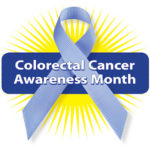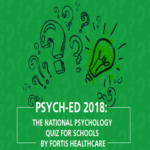CMAAO CORONA FACTS and MYTH: (GI )Gastrointestinal COVID
Author : Dr K Aggarwal , President CMAAO, HCFI, With input from Dr Monica Vasudev
India
healtysoch
New Delhi, January06, 2021 :
Chief Operation Warp Speed adviser Moncef Slaoui suggested giving adults 18-55 two half-doses of the Moderna vaccine to help speed up the rollout. (CNBC)
COVID-19: A Clear Affinity for the Digestive System
- February: presence of gastrointestinal (GI) symptoms was published in the first case of COVID-19 in the U.S.
- In the early days clinicians focused on respiratory symptoms and transmission, but Chinese researchers soon identified the GI/fecal/oral route as another avenue of spread for this imperialistic virus.
- The biggest revelation over the year has been that the oral route is a point of entry into the body and the digestive tract is a primary organ system for the virus to multiply, replicate, and potentially spread, as per Brennan Spiegel, MD, of Cedars-Sinai Medical Center in Los Angeles
- Experts were quick to warn that, extra-pulmonary complications in the GI tract might be more common than thought and should not be missed in the differential diagnosis of the 2019 version.
- Also GI symptoms, which appeared to affect 5% to 15% of patients, often persisted after the acute phase of the infection and sometimes signalled poorer patient outcomes
- In addition to the February report, U.S. and Chinese researchers pointed to digestive symptoms as a possible hallmark of COVID-19 infection in some patients, and advised doctors to evaluate all patients with GI complaints for the virus.
- And earlier in March, mounting evidence of such symptoms in as many as 50% of patients led several U.S. GI societies to issue a joint message on clinical precautions for providers of endoscopy and other gastroenterology care.
- March: Chinese study showed that in a subgroup of COVID-19 patients with mild disease, digestive problems, such as nausea and diarrhea, might be the only symptoms of infection, with no sign of the more typical fever or respiratory symptoms, and hence should be part of the differential diagnosis.
- Early May: New York clinicians published that 22% of hospital-assessed COVID-19 patients had diarrhea, 7% had abdominal pain, 16% had nausea, and 9% had vomiting. In all, 33% of patients had at least one GI manifestation, and 62% of patients had biochemical evidence of liver injury.
- A Chinese group showed that 50.5% of COVID-19 patients presenting at hospitals had at least one digestive tract symptom and in almost half of these, a digestive problem was the main complaint. GI involvement spelled longer hospital stays and worse outcomes, with only 34.3% of those with digestive symptoms recovering versus 60% of patients without digestive symptoms discharged as recovered.
- By July, pandemic in full swing, Italian physicians reported that admitted patients had lingering symptoms, including troublesome GI manifestations, for up to 2 months after recovering from the acute phase.
- A California study linked the use of a stomach acid-suppressing proton pump inhibitor (PPI) to an increased risk of COVID-19 positivity.
- August: virus can present as acute idiopathic pancreatitis and Black and Hispanic patients with existing pancreatitis were more prone to COVID-19 infection.
- Fall: Chicago clinicians presenting at the 2020 American College of Gastroenterology (ACG) virtual meeting observed that GI symptoms at initial presentation were independently associated with a poor prognosis. In particular, diarrhea at presentation was tied to more severe disease and poor prognosis, according to a review and meta-analysis also outlined at the ACG.
- North American Alliance for the Study of Digestive Manifestation of COVID-19 reported that while severe GI complications admitted to the ICU were uncommon — at only 5.1% — they were associated with a death rate of 55.6%.
- While the study showed a low incidence of intestinal ischemia, Emad Qayed, MD, MPH, of Emory University in Atlanta, and colleagues warned that COVID-19 is “a hypercoagulable disorder that is associated with a higher incidence of venous thromboembolism.” And since it can infect the endothelial cells of different vascular beds in the heart, small bowel, and lungs, endotheliitis caused by COVID-19 can lead to microthrombus formation and organ ischemia.
- As per Brett Williams, MD, of Chicago’s Rush University Medical Center “We know this virus has a propensity to cause endotheliitis, which can obviously involve any organ. Patients with GI symptoms quite possibly have direct viral invasion of the GI mucosa, liver, and pancreas, though in sepsis-type syndromes, it’s difficult to know how much the inciting pathogen, hypoperfusion, and inflammation each contribute to pathology in any one organ system.” He said at his center, elevated lipase levels in COVID-19 patients were relatively common — at 16.8% of those patients checked — and elevated lipase levels were strongly associated with ICU admission and intubation. “And there appear to be receptors for the virus in the pancreas, as well as in mature enterocytes
- New York: December publication of a hospital study finding that 3% of COVID-19 inpatients had GI bleeding, which was associated with higher mortality.
- Most implicated in GI involvement are ACE 2 receptors which abound in the intestines as well as the stomach and liver and to which the virus readily binds.
- Respiratory virus sheds into saliva from the shared upper airways and the salivary glands. When swallowed, the viral-laden saliva passes through the acid layer using the ACE2 receptors to enter epithelial cells lining the intestine, where it replicates rapidly. Although gastric acid can inactivate most viruses, “if the virus hits before your first meal of the day when acid levels are low, or if you’re taking a PPI or get a particularly large inoculum of virus, enough can get through to make it past,”
- The lingering long-haul effects of COVID-19, such as chronic diarrhea and nausea, are intensifying pre-existing GI conditions including irritable bowel syndrome (IBS) and other chronic problems.
- The virus disturbs the gut microbiome and exacerbates the mental anguish that these patients already feel
- The virus may also trigger new-onset post-viral IBS
healthysoch







